
Piercing the veil
A new exhibition at Buxton Contemporary finds a rich complexity in the shadowy terrain between life and death.

Juan Ford, The Walker, 2020, oil on linen, 150 x 180cm. Courtesy the artist and THIS IS NO FANTASY, Melbourne.
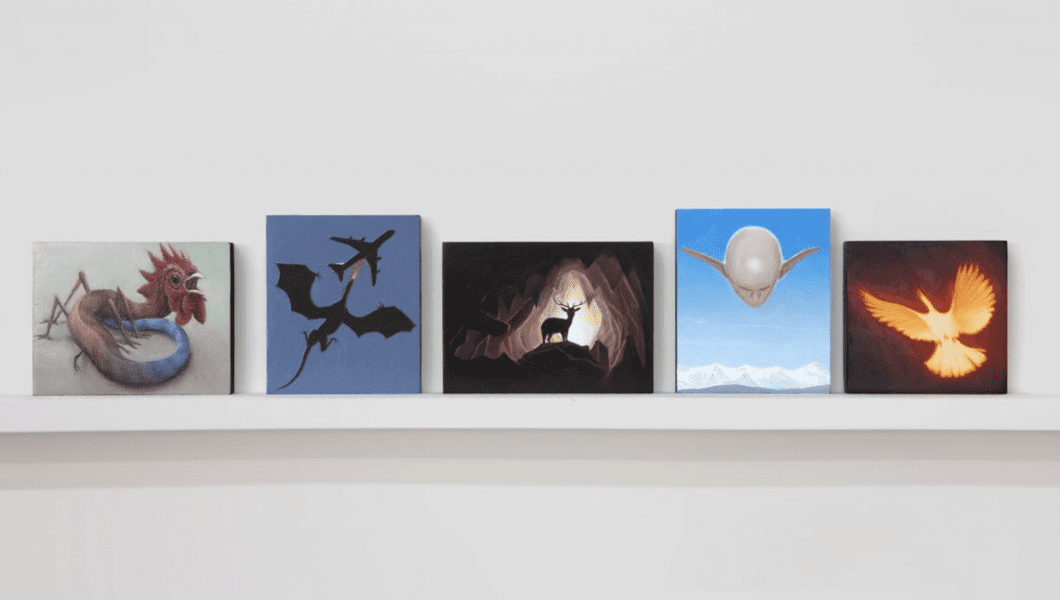
Juan Ford, The Basilisk, Western Dragon, Celestial Stag, Chonchón, The Phoenix, 2020 Oil on board approx. 9 x 10cm each, set of five. Courtesy the artist and THIS IS NO FANTASY, Melbourne.
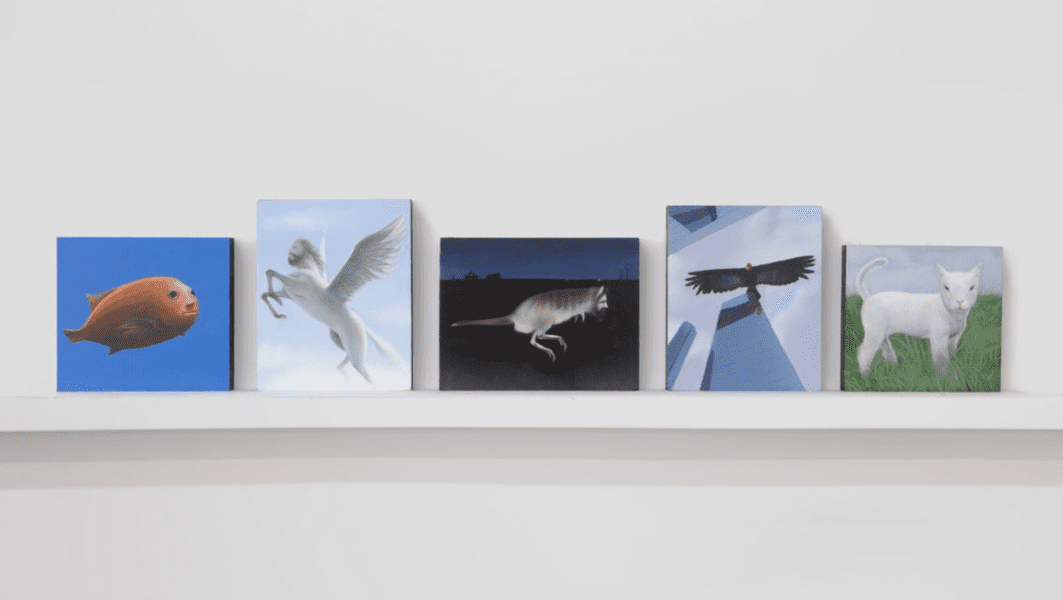
Juan Ford, Ichthyocentaur, The Burak , An Animal imagined by Kafka, The Rukh, The Crossbreed, 2020 Oil on board approx. 9 x 10cm each, set of five. Courtesy the artist and THIS IS NO FANTASY, Melbourne.
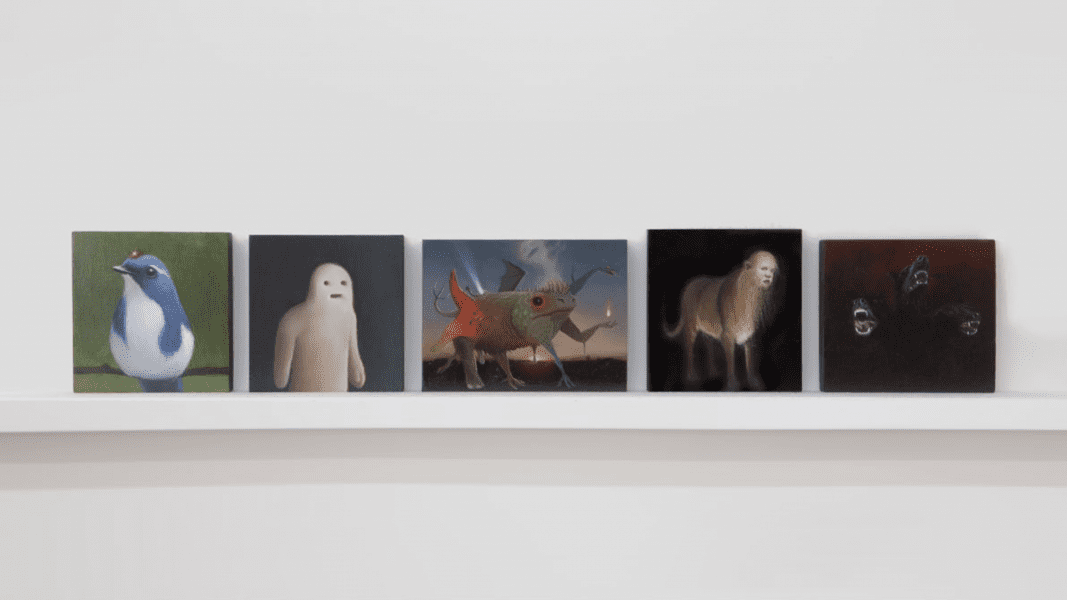
Juan Ford, The Carbuncle, The Golem, Baldanders, The Sphinx, Cerberus, 2020 Oil on board approx. 9 x 10cm each, set of five. Courtesy the artist and THIS IS NO FANTASY, Melbourne.
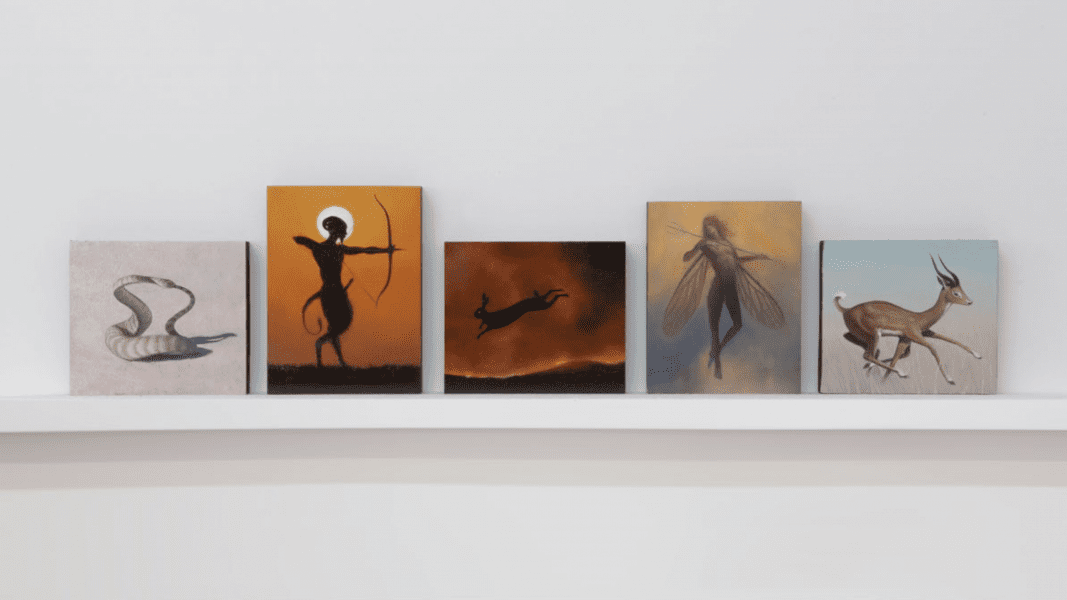
Juan Ford, Uroboros, The Satyr, The Lunar Hare, A Fairy, An Antelope with Six Legs, 2020 Oil on board approx. 9 x 10cm each, set of five. Courtesy the artist and THIS IS NO FANTASY, Melbourne.
Juan Ford is known for his hyper-real paintings of people and native flora. Tracey Clement spoke to the Melbourne-based painter about his ongoing environmental concerns, Spanish heritage and his instinct to turn to imaginary creatures for inspiration during lockdown.
Tracey Clement: In your current solo show, The Beast and the Bestiary, you’ve painted fantastical creatures from the Manual de Zoología Fantastica (Book of Imaginary Beings) by the Argentinian writer Jorge Luis Borges. He is a writer that a lot of artists respond to. What is it about Borges that you are drawn to?
Juan Ford: Well, my mum is Spanish. I grew up speaking Spanish. I speak fluently and I only speak to my parents in Spanish. And in the Spanish world he’s a giant, of course. So I’ve known about him since I was a kid; he was just part of the pantheon of writers that I was exposed to. So it’s a way to tip the hat towards my ancestry.
But lots of people who are not Spanish speakers really love Borges. Love him. His stories are wildly imaginative and very, very intelligent at the same time. And I think it’s that combination. He really opens up alternate worlds when you read him.
TC: So what was it about the pandemic that made you turn to this particular book on mythical or imaginary creatures, Manual de Zoología Fantastica, for inspiration?
JF: I knew in March already that I’d be facing a very introspective kind of world and reality. And I started ruminating on that, thinking about what that might mean for my own practice. There was a lot of fear and uncertainty. My imagination was really just pumping; it was going overtime. And I thought, well better to channel something unproductive into something productive. And the realm of the imagination that gets accessed through someone like Borges just seemed like a perfect departure point.
Also, these mythical little creatures were somehow poetically analogous to the pandemic; to the virus itself. The notion of this unknown critter that was infecting everybody, making them sick and killing people; it made me think about mythical creatures.
TC: You’ve painted over 60 imaginary beasts from the Borges book, and they are all quite small. You are known for much larger paintings, usually of people, so at first glance this body of work seems like a real departure. But while your paintings are usually described as realist, there’s a very strong element of the fantastical in your work, a kind of fairy tale or magical quality. What is it about that combination of realism and fantasy that appeals to you?
JF: I don’t know that I go specifically to create fantasy usually. Basically, I guess I’m conflating genres. Landscape or portraiture, or botanical illustration; by themselves they’re ho-hum. But if you mash them together, then all of a sudden sparks fly. And you get really interesting things happening.
TC: In alot of your previous work people’s faces are obscured, often by foliage, and there is something very sort of ritualistic or pagan about them. Is that subconscious for you then?
JF: Oh, I think so, alot of the time. But I am really fascinated by shamanism and interior worlds.
And obviously, there is an environmental statement through all of them; it’s an overarching theme that I address in this new work as well. We use language and our intelligence to try to separate ourselves from nature, from natural processes. We think ourselves apart, but we’re not! It’s an absurdity. I think I try and represent that absurdity a lot of the time.
In reality we are animals and, you know, we’re products of something that is far greater than us. I guess I’m linking it to mysticism. I really think that the notion that we should perhaps worship nature is where I’m coming from. It’s an ancient animistic kind of response I’d like to tap into, privately.
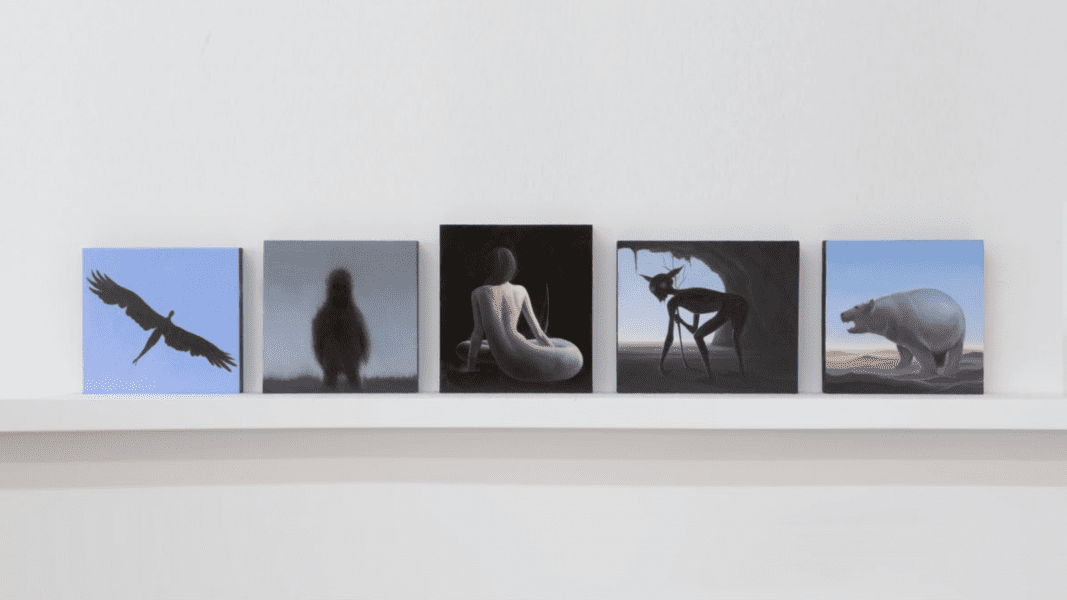
TC: Well, that definitely shines through in a lot of your work. So who is the beast in the title, The Beast and the Bestiary?
JF: Well, it’s a little bit ambiguous. There is one larger painting in the show; it’s like a dog or something covered in eucalyptus leaves. And at first he was the beast. But when I photographed the Borges bestiary, for scale, I placed them all next to me on the studio floor. And people were asking if I was the beast?
And I think, with artists, ambiguity is your greatest ally. And I’m using that a little bit. Maybe you are the beast. Maybe I am the beast, you know? Because, ultimately, the bestiary comes from us.
TC: Do you have a favourite from all the Borges creatures that you painted? People often refuse to choose a favourite; they feel like it’s choosing between their children.
JF: It is a little like that. Because each one of them has a memory attached to it. But I’ve often, for various reasons, identified with the Minotaur, or bulls. I don’t know why. I don’t know what that says about me! So I’m going to say the Minotaur.
TC: So you are the beast!
JF: That’s right!
The Beast and the Bestiary
Juan Ford
THIS IS NO FANTASY, online
23 Sep – 31 Oct